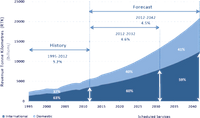motivation
Around 1505 Leonardo da Vinci released Codex of Flight of Birds which contained detailed drawings and in fact awareness for the physical principles of flight.
On December 17, 1903, Wilbur and Orville Wright made four brief flights at Kitty Hawk with their first powered aircraft. Since that time new inventions and occurred at increasingly shorter intervals.
With increasing air traffic, numbers of accidents and incidents reached new highs urging to counteract the trend. To create a common standard in civil aviation ICAO was founded in 1944. With this cornerstone set in position the way was paved for safe air-travels worldwide an with few exceptions air-operation started to increase from that day.
Today aviation is being referred to as safest mean of transport. Really?
As per ICAO Safety Report 2.9 accidents per million departures took place in 2019-2020. Following the ICAO Safety Indicators Study Group (SISG) 2020 is now the fourth year to shown an increase on accident rate on commercially operated aircraft.
refer to: ICAO Report 2020
Sky as the limit?
Taking into account the growing numbers in international air-travel and cargo in the new 20 years there is numerous voices calling out for more pilots, maintenance staff and other operational ground- and flight personnel. Thus drives an increasing demand for well trained staff and decreased availability of same, possible safety risks could arise. Therefore aviation industry shall use the remaining time to keep this gap as small as possible.
Due to the SARS-CoV-2 pandemic the related effects will be postponed by 3-5 years resulting in major gap between demand and availability of pilots and trained/qualified mx staff. Due to the crisis highly qualified staff is going to change into different business fields or retire early.
Recently a mayor shift of personnel from Pax to Freight OPS has been witnessed but way not all flight and ground crew made the step into this different direction.
How to proceed?
Depending on how global governments deal with corona crisis a recovery of pax flights and hence decreased number of cargo flights will only occur in 3-5 years. Meanwhile the demand for freighter aircraft, especially converted freighters will increase.
At this point we need to get in place training procedures for professionals and those wishing to get there. Only highest quality training and education can get people towards the aim of keeping air travel and transport safe.
Our challenge is to keep aviation the safest way to travel. Together we will need to face the challenges of tomorrow.
Let us bring the right people together at the right time to turn visions and strategies into reality.
That is your investment in the future of aviation safety.

